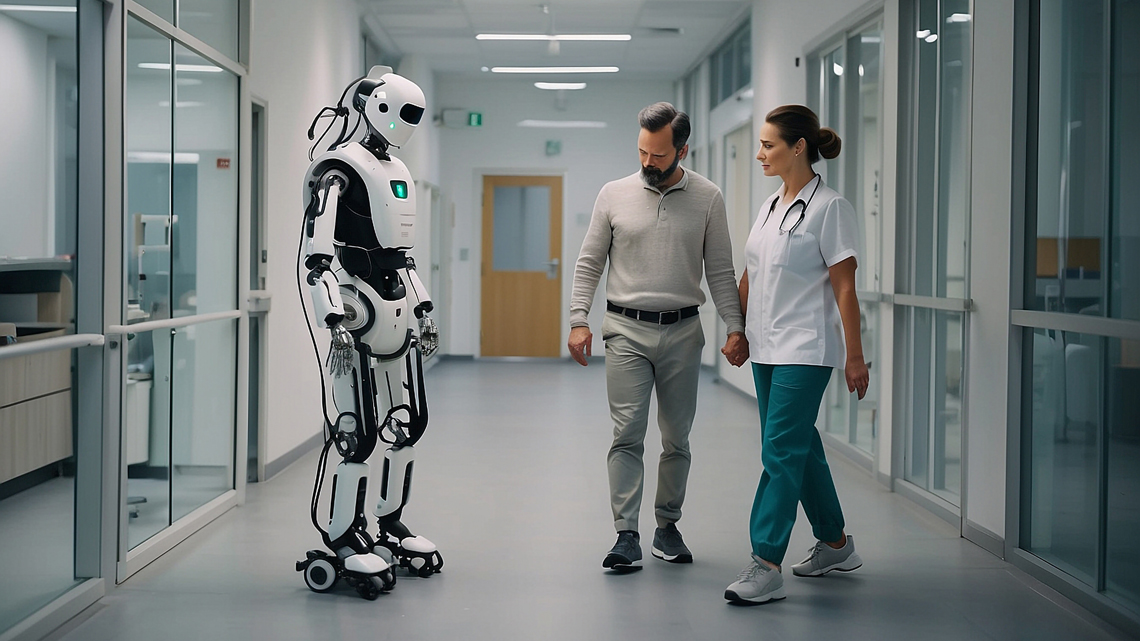
The healthcare sector is entering into a transformational era with the amalgamation of both technological intelligence and human capacity. Robotics in healthcare are integrated for broader advantages including surgeries, administration, logistics and disease diagnostics. Robotics, which was once limited to surgical operating rooms, now runs through the healthcare ecosystem encompassing care delivery, logistics, and diagnostics. While augmented and intelligent automation are key drivers for this transformation, the increasing adoption will redefine the entire approach to care. This article elaborates on the continued escalation of robotics in healthcare and value to current medical systems.
Applications of Robotics in Healthcare
- Robotic-Assisted Surgery
Robots driven surgeries provide exceptional accuracy, precision and control. They allow the surgeon to operate through smaller incisions, thus improving patient outcome and speeding recovery. They play a critical role in urological, orthopedic, gynecologic and cardiovascular surgery, where accuracy measured in millimeters can greatly affect results.
- Automation in Hospital Operations
Hospitals accept broader use of robotic systems for routine tasks involved in operations such as transport of materials, delivery of supplies, and disinfection of rooms. Such automated systems relieve the burden of manual labor and enhance effectiveness in controlling infection and facilitate smoother operation of hospitals and enabling medical professionals to concentrate on clinical duties.
- Robotics in Rehabilitation and Physical Therapy
Robotic devices including exoskeletons and motor-assisted devices for rehabilitation from neurologic and musculoskeletal conditions provide rehabilitation for patients. Such devices permit the repeated performance of accurate movements, helping to design and correct movement practices and help patients coordinate biofeedback.
- Diagnostic and Laboratory Robotics
Robots in laboratories are presently engaged in sample handling, laboratory protocols and data processing and provide a very rapid turn-around time with the reduction of human error. During periods of peak demand such as pandemics, robotically managed laboratory systems can be installed and utilized to increase the capacity of laboratories while not sacrificing their output of accuracy.
- Robotics in Elderly Care and Assisted Living
Robots assist with mobility, reminders for medications and health care. This added independence and safety for elderly patients. These assistant robots are good for mental health management as they provide interaction with patients. Patients in need of dementia care can especially benefit from this type of robotic contact.
- Supply Chain and Pharmacy Automation
The automated pharmacy system redefines healthcare technology with accuracy of prescribed medications, the speed of dispensing, and inventory control. The application of robotics enhances logistics and supply chain management of hospitals by monitoring, restocking, and delivering medical supplies. A reduction in waiting time in the hospital environment is realized as well as aiding in smooth delivery of health care.
Potential Benefits of the Convergence of Robotics and Healthcare
- Enhancing Precision and Consistency in Clinical Procedures
Robotics integration facilitates a more precise practice of clinical procedures. Surgical or diagnostic, these systems make possible less variability and more repeatability, which results in more safe and predictable results.
- Addressing Workforce Shortages and Burnout
With the current increasing shortages of staff and burn out of clinicians, robotics reduce the repetitiveness and requirement of physical presence of medical professionals, allowing them to make decisions and complete tasks in an accelerated manner. This also facilitates the healthcare professionals to allocate more time on patient interactions, aiding better care as well as job satisfaction.
- Improving Operational Efficiency and Hospital Management
The robots improve internal functionality of operating processes, which facilitate reduced waiting time, decreased operational expenditures, better distribution of resources. This is particularly important in high volume hospitals and health systems, as they carry complex networks of care.
- Expanding Access to Care and Remote Treatment
Teleoperated and mobile robotic systems facilitate the delivery of care in remote or medically impoverished places. Robot surgical systems coupled with telehealth permit specialists to operate through geographies and help bridge the access gap.
- Personalization and Data-Driven Healthcare Delivery
Modern robotic solutions permit the collection and integration of real time patient data for continuous analysis, which help speed the improvement of individualized treatment plans, outcome detailed analysis, and predictive analysis followed with integration of digital health systems, therefore evolving a more intelligent patient health oriented care approach.
Conclusion
Robotics has embedded itself in healthcare surpassing beyond a passing trend, but rather a tactical repurposing of care model operations at a foundational level. From improving surgical precision to empowering sophisticated supply chains, robotics processes are not on the verge of healthcare innovation; but the foundation of advancement. As healthcare executives face increased demand and operational complexity of care delivery, robotics in medicine now offers not only solutions, but a pathway to better patient care and management. Organizations that invest in this transformative movement today will define the care models of tomorrow.
To read more, visit The Healthcare Insights.
